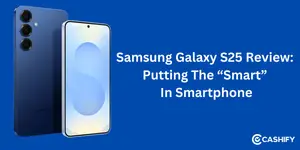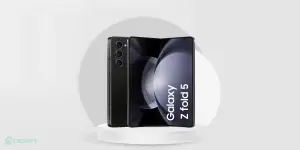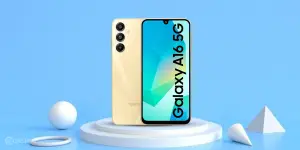Buying the right graphics card is vital if you want to build a gaming pc on your own. It is the most critical component and even more important than the CPU. But there is a lot to consider when you are buying a graphics card, including the type of monitor you have, the size of your PC case, the games you are planning to play on it. And to add it also depends on what kind of tasks will you perform on your PC. If you are into 3D rendering and modelling then you would definitely need a high-end graphics card.
GPU is important, but there is a wide selection of options available from various manufacturers. And you can’t immediately find which one is best for your needs. This is why it is crucial to know the basics of how they operate and the difference between GPU types that will help you make a better decision. So here in this guide, we have listed a few things that you should keep in mind when shopping for your next graphics card for pc.
Guide for buying the right Graphics card for PC
Integrated versus discrete graphics card
Integrated graphics cards are common, and they have a smaller form factor included in laptops. But you will also find them on desktop PC where there is no need for much processing power. Today, most CPUs have integrated graphics that are specifically built into the CPU itself. But they often tend to be turned out as lower performance options. And do not provide enough juice to play games or perform a graphics-intensive task.
But in the case of integrated graphics, they don’t generate as much heat or use as much power compared to the discrete graphics cards. They were generally preferred for simple tasks and are more budget-friendly.
Suppose you are interested in using your PC for graphic-intensive tasks such as video editing, photo editing, and 3D rendering, or for playing games at high settings. You definitely should invest in a discrete graphics card for pc.
A discrete graphics card is built separate from the processor and is mounted onto the motherboard using the PCI express slot. These discrete graphics cards are more common on desktop PCs but you also have these on laptops as well.
The GPU has its own memory, a dedicated heat dissipation system, and a built-in set of fans in some models. These GPUs consume a lot of power and generate a lot of heat in return. In total these are much more powerful than integrated graphics.
Also read: How To Make Money Playing Games?
Ray Tracing: Its a must have if you are serious about gaming!
Ray tracing is one of the recent technologies that has excited gamers, and it is found in newer graphics cards. Generally, it is used in gaming, and it is a technique that produces extremely realistic lighting effects and shadows. This is achieved through an algorithm that traces the light path and then attempts to simulate how the light would react with the objects if it was in the real world.
The latest games, such as Control, Cyberpunk 2077, and Watch Dogs Legion, are a few games that extensively use ray tracing; and mimic how the human eye can process shadows and reflections. It has been considered one of the biggest innovations in graphics for many years. And it is something that both Nvidia and AMD are improving their latest GPUs.
But the technology has not reached its full potential yet since not much hardware can support it and the GPUs that support this are fairly new. But many game developers are actively embracing the technology wholeheartedly and are building games that support ray tracing.
The ray-tracing technology has been used by many film studios for many years, especially in big-budget action films. But with PC games, it is much more difficult to render in real-time. In the past, many game companies have used a process called rasterization. It is a technique that translates 3D polygon all models into a 2D image and pre-renders light effects with the introduction of ray tracing to the modern graphics cards. You can expect to see everything from huge explosions in a firefight down to the sun rays crossing through a dimly lit room window.
The latest Nvidia RTX 30 series and last year’s RTX 20 series are the offerings from Nvidia that support ray tracing. While AMD’s RX 6900 XT, RX 6800 XT, etc are a few offerings from AMD that support ray tracing. While it is not easy these days to get a graphics card at retail prices due to global chip shortage. And if you can find one in your budget you should definitely get one for yourself. Otherwise, the last generation RTX 20 series can be grabbed at a discounted price and is the most economical way to experience ray tracing.
Also read: 5 Most Expensive Laptops to Buy in India
Display resolution: Is 4K important or you can settle with 1080p?
We are talking about gaming, so it is essential that you know which resolution you will be playing your games at. The higher your monitor’s resolution is, the more powerful the graphics processing unit you will need to take full advantage of it. PC games have become more demanding than ever, and you might also need a 4K monitor. And with that, you will need a high-end graphics card that can provide you with that experience.
Playing games at 4K resolution is no joke and it requires a high-end graphics card. Mainly if you plan to experience games at 4K resolution at a decent playable frame rate with ray tracing. For this, you definitely need an Nvidia RTX 3080 and nothing less than this can render a minimum of 60 frames at 4k resolution.
Clock speed: More the Better
Clock speed is another important aspect that you will often hear when talking about graphics cards and their performance. The clock speed is measured in megahertz (MHz), and it tells you how fast the gaming processor unit can render graphics. Therefore logically, the higher the MHz, the faster the graphics card performance will be and the better you will enjoy your gaming sessions. In terms of GPU, we have two types of clock speeds, base clock and boost clock. While the base clock is the minimum speed at which the GPU runs. The boost clock is the speed at which the graphics chip can accelerate temporarily when under load.
Many advanced users often try to get more out of their graphics cards by overclocking them. Overclocking is a complex process that involves pushing your GPU to run at a higher clock speed. Only people who know what they are doing should do something like this. But if you feel that your GPU performance is not up to the mark and want a free boost for your GPU, you can research a bit more about this. There are a lot of apps out there made by the GPU manufacturers that make overclocking the graphics card relativity easy and safe for anyone. The most recommended tool is MSI Afterburner which can help you overclock your GPU with just a few clicks.
On the other hand, to please their target audience, many of the manufacturers sell factory overclocked version software graphics cards that come out of the box already overclocked. Usually, such models are identified by having ‘OC’ in their model name.
Also Read: How To Install Multiple Graphics Cards On Your Desktop Computer?
TDP: Don’t skip this one
The thermal design parameter or TDP is the measurement of heat dissipation. And provides you with an estimate of how many Watts you will need to run your graphics card at its basic settings. In CPU TDP stands for thermal design power while in graphics cards it means thermal design parameter. The TDP of graphic cars is very much similar to the TDP of processors. Like for graphic card is defined by the manufacturer and it refers to the thermal parameter that each of their GPU generates.
This is not much accurate way to measure the power consumption of GPU because the power draw is measured in electrical watts while the heat output by the GPU is measured in thermal watts. Essentially both are the same but there is a difference between the power drawn by GPU. And the heat produced by it and that difference is converted into work done by GPU while performing.
So when it comes to choosing a GPU you must keep in mind that if you are running a 400 watts power supply unit with 95 watts CPU. And now you need to add a graphics card with 250 watts TDP then you will definitely need to upgrade your power supply unit. Your 400 watts power supply unit is not sufficient. Generally, 600w power supply units were decent enough for many previous-generation graphics cards. If you are choosing something like Nvidia RTX 3080 or AMD RX 6800 XT then you will want higher wattage PSU especially if you sure overclocking the cards. With a high-end GPU, it is recommended to get an 800W Gold (80 Plus Gold Certification) standard PSU.
CUDA cores or Stream processors
CUDA cores and stream processors both are names of the same thing. So, CUDA cores for Nvidia are similar to the Stream processors for AMD. CUDA or (Compute Unified Device Architecture) is a specialized gaming language developed by Nvidia that leverages the GPU to perform some specific tasks with greater performance. Each GPU can include CUDA cores anywhere from hundreds to thousands. Just like RAM the more CUDA cores your GPU has the more computing power it will provide. But you can’t directly compare the two things like Stream processors from AMD and CUDA cores from Nvidia to know which one is better. Both of them are designed in such a way that they provide optimum performance for each of those GPUs.
Founders Edition vs 3rd Party Manufacturers
Even if you decide what GPU you want to buy, there are still plenty of options in terms of cooler design and manufacturer. Nvidia makes and sells graphics cards under the Founders Edition models for all GPUs. On the other hand, AMD licenses their reference design to other manufacturers. In general, both companies have GPUs that appear in third-party cards from several different vendors.
Third-party cards are more expensive as they come with elaborate coolers, extra fans, and often have higher clock speeds. But they can also be more expensive than ordinary graphics cards. But that being said, beefier cooling helps run the GPU cooler and helps improve the performance. There is also some news that Nvidia’s latest Founders Edition cards, such as the RTX 3080 and 3090; often run very hot, so you should do some more research on this beforehand.
It’s usually better to skip the founder’s edition cards and opt-in for 3rd party cards from manufacturers such as Zotac, Asus, or MSI. These 3rd party cards are usually overclocked out of the box, have better heat sinks; and even have better high-speed fans that can help reduce thermal throttling and deliver slightly better performance. But this comes at an extra cost and these cards are usually 25% more expensive than the founder’s edition cards.
Output Ports: Do you need multi montior setup?
The output ports of any graphics card are important as they determine what and how many displays you can attach to it and what resolutions they would support. The universally accepted port is the HDMI port, and it makes it very easy for anyone to attach their display to their gaming PC. Now, most of the HDMI ports out there support up to 4K (3840 x 2160) resolution at up to 60Hz. The latest HDMI 2.1 can support 4K at 144Hz and 8K (7680 x 4320) at 30Hz.
Not to forget, there is also DisplayPort which is another popular video output port, and it supports 4K up to 120Hz and 8K resolution at 60Hz. Many of the latest monitors can also support running games at 8K with two DisplayPorts, which would be at 8K resolution with a 60Hz frame rate.
There are also some GPUs in the market that comes with DVI and VGA ports, but at this point, they are both too old. They are used only to run many of the older monitors.
Also read: 5 Best Laptops Under 50000 to Buy in India
Video memory: More the Merrier
Video memory is also one of the most important aspects of a graphics card. The dedicated amount of memory on a video card is dedicated to graphics tasks and stores image data for quick access. The data often includes a z-buffer which has information regarding the depth of the objects in a 3D space from a certain perspective. It is mostly used in computer games and creates computer-generated effects for movies.
This may seem a bit too complicated to you, but as with standard RAM, the more VRAM you have on your graphic card when it leaves, the better it performs. The modern graphic card generally has virtual RAM anywhere within 2GB up to 24 GB. The latest generation of video memory is currently GDDR6. So if you want a brilliant gaming performance from your GPU, you should focus on picking up a GPU with a decent amount of GDDDR6 memory. 8GB is the standard memory size in RTX 3060 and 3070 and this should be more than enough for anyone. While for medium-level performance the GTX 1650 is a good option and is features 4GB of GDDR5 memory, and it’s decent for playing some old titles at decent frame rates.
Nvidia vs AMD: The Clash of Clans
Now let’s discuss the two biggest players in this industry that provide reliable gaming GPUs for users. When looking for a new GPU, you choose between graphic cards that include all the components necessary to render a video or image to your display. These cards often include cooling solutions, necessary connectors, and, most importantly, the graphics processor itself. The graphics processor chip is incredibly complex, and it has been developed with decades of research and experimentation. Now because the barrier for entry to the industry is so high, it is entirely possible that any GPU you will have to come from any one of these companies, either Nvidia or AMD.
Both the companies have been in the market for a long time, and both have had healthy competition to claim leadership in the GPU market. This has forced both of them to innovate to the benefit of consumers. Both manufacturers have sense and offer solid options to choose from. Whichever option you choose, you will find a GPU that caters to your gaming needs.
So when you are out shopping for a new graphics card, most often, you will be judging from models made by other 3rd party companies instead of Nvidia and AMD, such as Asus, MSI, and GIGABYTE. These companies have chips designed by either AMD or Nvidia and then create their own graphics card using their technology. This is similar to buying a car, but AMD or Nvidia creates the engine; and the rest of the body and the cooling are designed by the company that manufactured the card itself. So if you buy an Asus branded GPU, it will still have Nvidia or AMD chip inside, but the rest of the body is designed by Asus. It is a way for each debut manufacturer to showcase their unique design choices and technologies, resulting in plenty of options.
While each Nvidia and AMD have their own bunch of proprietary technologies to improve performance. But due to such tight competition, each brand has an alternate counterpart for the same technology. For example, Nvidia has DLSS which is Nvidia’s AI-assisted resolution upscaling solution that improves frame rate by maxing out your monitor’s resolution. On the other hand, AMD’s response to DLSS is Fidelity FX Super Resolution (AMD FSR) which offers similar functionality.
Overall there is not much performance difference between the two brands in terms of performance. The products and technologies offered by both brands go head-on with each other. And you won’t regret choosing any one of the two brands.
Which GPUs are budget, mid-range and high-end?
Nvidia and AMD are two of the most preferred manufacturers to get a graphics card. So here we have listed down some of the major latest GPUs from both companies. You can look at their recommended use, price range and get an idea of which GPU would fit your requirements.
| GPUs (in perf order) | Class | Recommended Use | Price range |
| Nvidia GeForce GT 1030; AMD Radeon RX 550 | Super cheap | Suitable only for casual tasks and not gaming. Only buy if your CPU doesn’t have integrated graphics. | Rs. 9,990 to Rs. 12,096 |
| Nvidia GeForce GTX 1650 Super, Nvidia GTX 1650; AMD Radeon RX 5500 XT 4GB/8GB. Older: Nvidia GTX 1060, GTX 1050 Ti and GTX 1050; AMD RX 590, RX 580, RX 570, RX 560 | Budget cards | Decent for low resolution games or gaming at just 1080p | Rs. 14,450 to Rs. 18,990 |
| Nvidia GeForce RTX 2060, GTX 1660 Ti, GTX 1660 Super, GTX 1660; AMD Radeon RX 5700, RX 5600 XT. Older: Nvidia GTX 1070 Ti, GTX 1070; AMD RX Vega 56 | Mid-range cards | Good for 1080p gaming, compatible with VR headsets | Rs. 21,000 to Rs. 31,000 |
| Nvidia GeForce RTX 3070, RTX 3060 Ti, RTX 3060, RTX 2070 Super, RTX 2070, RTX 2060 Super; AMD Radeon RX 6800, RX 5700 XT. Older: Nvidia GTX 1080 Ti, GTX 1080; AMD Radeon VII, RX Vega 64 | High-end | Good for VR headsets and gaming at resolutions at 1440p or high-refresh 1080p monitors. | Rs. 31,000 to Rs. 1,19,000 |
| Nvidia GeForce RTX 3090, RTX 3080, RTX 2080 Ti, RTX 2080 Super, Titan RTX. AMD Radeon RX 6900 XT, RX 6800 XT. Older: Nvidia Titan V, Titan Xp | Premium / Extreme | These are best for 4K, and the RTX cards support new ray-tracing and A.I. tech. | Rs. 1,60,000 to Rs. 3,14,990 |
















